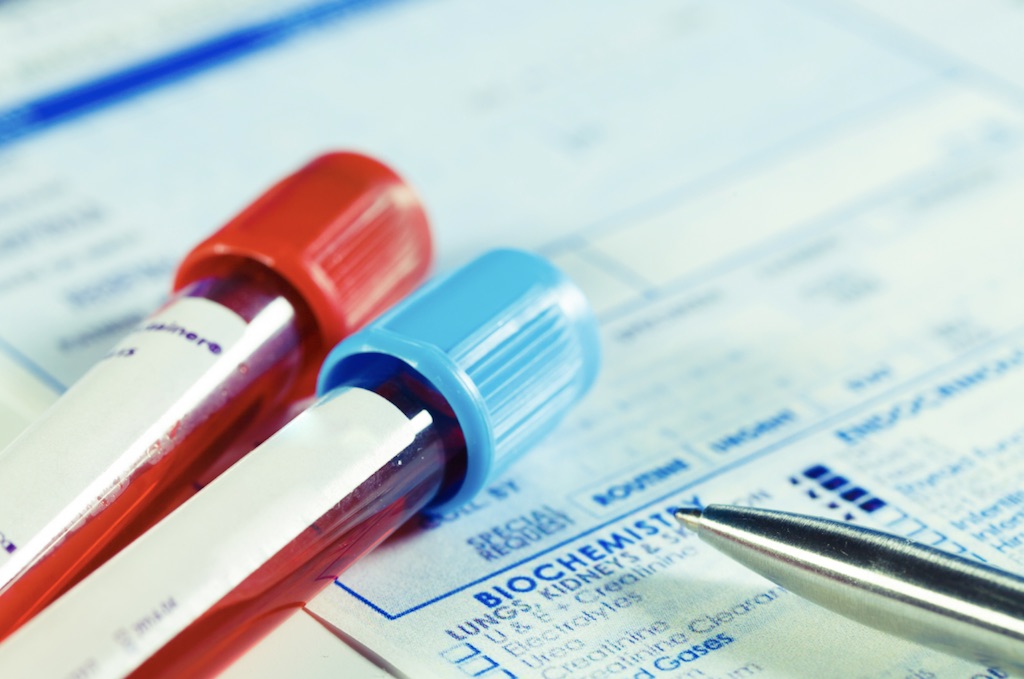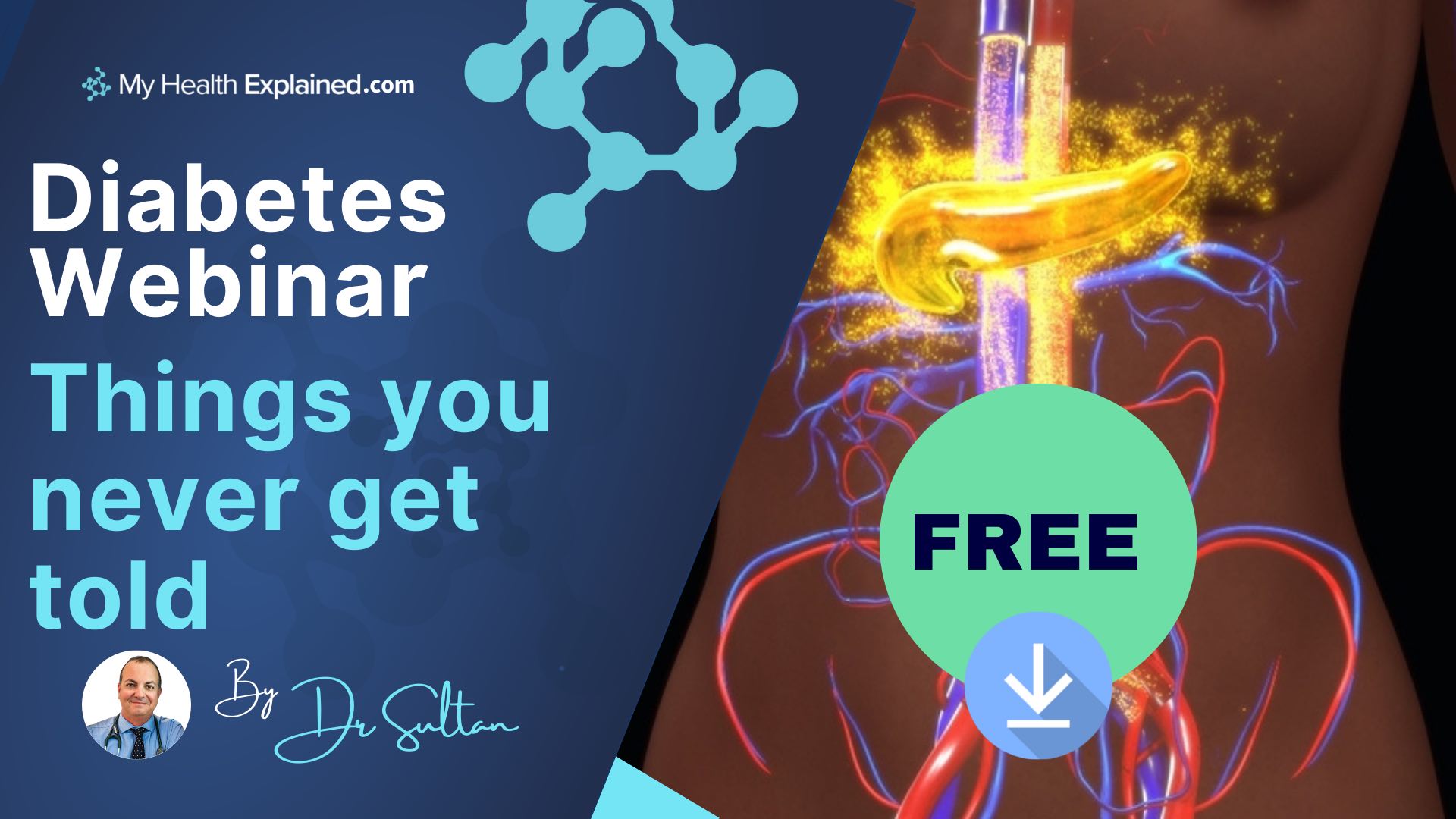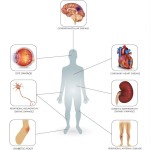- Home
- Dr Sultan Linjawi
Type 1 Diabetes
Type 2 Diabetes
Prediabetes
Gestational Diabetes
- Diabetes Information
- Testimonials
How is prediabetes, or borderline diabetes, diagnosed?
Diagnosing diabetes can often happen by chance. Most people diagnosed with prediabetes are picked up by chance based on a high blood glucose reading noticed during routine blood testing. It is not the best way to test for diabetes and so more formal tests should be asked for. This is typically a glucose tolerance test, or another test called an HbA1c. A glucose tolerance test involved a fasting blood test, 75g of glucose as a sugary drink followed by another test of blood sugar taken 2 hours later. Prediabetes is diagnosed when the sugar is too high to be normal and not high enough to have diabetes diagnosed.
It is important for diabetes to be diagnosed early so it can be properly controlled, and any complications avoided. Diabetes is a common condition affecting more and more people every day. In 2016, diabetes was the direct cause of death in 1.6 million people (WHO, 2018) worldwide. If we consider death from diabetes related conditions, it is estimated to lead to the death 4 million people every year around the world, more than malaria, TB, and HIV combined.
For information, explore our signs and symptoms of diabetes article by following the link.
PreDiabetes Content |
|---|
| PreDiabetes Program |
| Overview |
| Risk Factors |
| Symptoms |
| Diagnosis |
| Complications |
| Treatment |
| Diet |
| Monitoring |
| Tools |
| Mental Health |
| Prevention |
American Diabetes Association diabetes screening guidelines
Since the symptoms of prediabetes and other types of diabetes appear more gradually, the American Diabetes Association (ADA) has recommended some screening guidelines. These guidelines are based on which groups of people are most at risk of developing diabetes. The ADA recommends people in the following groups be checked for diabetes:
- Anyone with a body mass index higher than 25 (23 for Asian backgrounds), regardless of age, who has additional risk factors, such as high blood pressure, abnormal cholesterol levels, a sedentary lifestyle, a history of polycystic ovary syndrome or heart disease, and having a close relative with diabetes.
- Anyone older than age 45 is advised to receive an initial blood glucose screening, and if the results are normal, then be screened every three years thereafter.
- Any woman who has had gestational diabetes, is advised to be screened for diabetes every three years, and in every future pregnancy.
- Anyone who has been diagnosed with prediabetes is advised to be tested every year.
How will my doctor know what type of diabetes I have?
Testing for prediabetes, and type 1 and type 2 diabetes can use a couple of different methods for diagnosis. Your doctor will also look at your previous medical history, including your family history, as well as conduct some blood tests.
When your doctor is testing for prediabetes, they will be testing to see if you have impaired glucose tolerance (IGT) or impaired fasting glucose (IFG). It is possible for some people to have both impaired glucose tolerance and impaired fasting glucose.
- Impaired glucose tolerance (IGT) is when blood glucose levels are higher than normal but not high enough to be classified as diabetes.
- Impaired fasting glucose (IFG) is when blood glucose levels are high in the fasting state but not high enough to be classified as diabetes.
Diagnosing diabetes should not rely solely on using a Hb A1c test. Using only one testing method for diagnosing prediabetes and type 2 diabetes may result in missing people, leaving them undiagnosed. If someone is not diagnosed with diabetes, they will likely continue going about their normal daily lives, not realising that they could be making the condition worse.
What is the diagnostic criteria for prediabetes?
People with prediabetes can either have
- a) High fasting sugar levels
- b) High post meal sugar levels
- c) Both high fasting and post meal sugar levels
Below are the diagnostic criteria for someone with prediabetes.
| Test | mmol/L | mg/dL |
|---|---|---|
| Impaired Fasting Glucose (IFG) | 5.5 – 6.9 mmol/L | 100 – 125 mg/dL |
| Impaired Glucose Tolerance (IGT) | 7.8 – 11.0 mmo/L (2 hr plasma glucose) | 140 – 196 mg/dL (2 hr plasma glucose) |
The Hb A1c test blood test
The Hb A1c test, or the glycated haemoglobin A1c test, is a blood test that can be taken at any time. You don’t need to fast before taking the test! It indicates what your average blood glucose levels are over the past three months, by measuring the percentage of blood glucose that has attached to haemoglobin. Haemoglobin is the oxygen carrying protein found in red blood cells.
In people with diabetes, the higher the blood glucose levels are, the more glucose you have attached to haemoglobin. A Hb A1c level of 6.5% or higher, on two separate tests, can indicate that you have diabetes. Whereas a Hb A1c level between 5.7 and 6.4% can indicate prediabetes. Levels below 5.7% are considered normal. In other words, higher A1c percentages indicate an increased risk of diabetes.
The Hb A1c test should not be used alone to test for diabetes, as accuracy can vary across age, ethnicity, and the presence of other conditions. Hb A1c tests should be used in combination with other blood glucose tests when diagnosing prediabetes or type 2 diabetes.
You can learn more in our article The HbA1c test to diagnose diabetes.
Why use a Hb A1c test if it isn’t accurate?
Some doctors may choose to use only the Hb A1c test due to convenience. The Hb A1c test requires a blood sample. However, the oral glucose tolerance test requires the patient to fast overnight and then drink a sugary drink the next day, with blood glucose levels monitored before the drink and two hours after consumption.
Random blood glucose test
In this test, a blood sample is taken at any random time, regardless of when you last ate. A random blood glucose level of 11.1mmol/L (200mg/dL) or higher can indicate diabetes.
Fasting blood glucose test
A blood sample is taken after an overnight fast. A fast is when you refrain from eating for a period of time. Fasting blood glucose levels less than 5.6mmol/L (100mg/dL) is considered normal. A fasting blood glucose level of 5.6-6.9mmol/L (100-125mg/dL) is considered to be prediabetes, while 7mmol/L (126mg/dL) or higher on two separate tests, is considered diabetes.
Oral glucose tolerance test
This test is similar to a fasting blood glucose test. In an oral glucose tolerance test, you fast overnight and then a fasting blood sugar level is measured. You then proceed to drink a sugary liquid, and your blood glucose levels are tested periodically for the next two hours.
A blood glucose level less than 7.8 mmol/L (140 mg/dL) is considered normal. A reading of more than 11.1 mmol/L (200 mg/dL) after two hours indicates diabetes, whereas a reading between 7.8 mmol/L and 11.0 mmol/L (140 and 199 mg/dL) indicates prediabetes.
Urine test
If the doctor suspects that you have type 1 diabetes, they may test your urine to check for the presence of by-products of muscle and fat tissue breakdown. In people with type 1 diabetes, muscle and fat are often broken down as a source of energy, since there is no insulin produced to assist glucose to move from the blood and into the cells, where it can be used for energy. This is why rapid and unintentional weight loss occurs in people with type 1.
DO YOU WANT TO GET YOUR DIABETES UNDER THE BEST CONTROL?
Click the program that best describes your situation.
What should I do next?
If you experience any symptoms of prediabetes or you have risk factors for developing prediabetes, it is important to get tested for as soon as possible. Some people are at higher risk and need regular testing. If you are 45 years or older or have other risk factors for prediabetes and type 2 diabetes, you will require more frequent testing. By diagnosing and treating the prediabetes early, it means you can decrease the risk of developing or delay any further health complications of prediabetes, for example nerve damage, blindness, and heart disease. It is important to know that diagnosing prediabetes should not rely solely on using a Hb A1c test.
Once you learn what your prediabetes status is, or if you already have prediabetes, the next most important step is to become educated. You can join the Personalised 12-week Prediabetes Program to help you learn how to prevent or delay prediabetes. The prediabetes program is personalised and tailored, giving you more of the content that you want. The program also helps you to stay motivated and teaches you what changes you need to make. The first week is free and full of helpful and crucial information.
If you would like to be a part of a supportive program, with easy to understand video content covering all aspects of diabetes, join our Personalised Prediabetes 12-week Program today! Don't forget, when you sign up, you receive the first week free!
Interested in more information on prediabetes?
Follow the links below to learn more about prediabetes.











